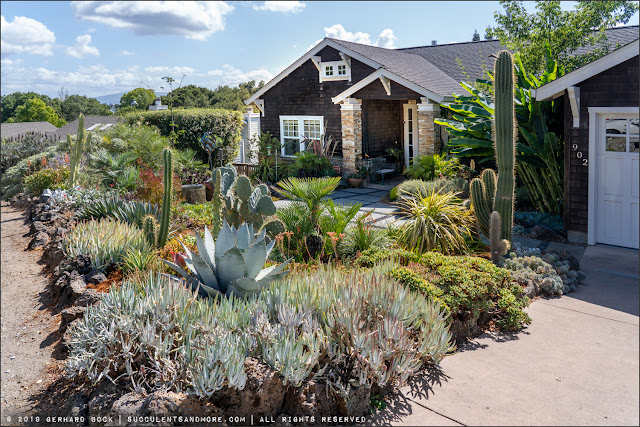Marilyn and Peder's David Feix-designed garden on the San Francisco Peninsula

I joined the Bromeliad Society of San Francisco (BSSF) this summer, and the first garden I visited with them was that of Bay Area landscape designer David Feix. He's a big fan of bromeliads, succulents and tropical-looking plants, and his Berkeley garden reflects that. As luck would have it, my second outing with the BSSF had a David Feix connection as well. The San Francisco Peninsula garden of BSSF members Marilyn and Peder was designed by David, and he's still very much involved in its maintenance. According to David, the property is about ¾ acre (~30,000 square feet). The garden was started in 2015 immediately after Marilyn and Peder bought their new home. The only things remaining from the previous garden are the pool and the pool house as well as a few mature windmill palms ( Trachycarpus fortunei ) and giant birds of paradise ( Strelitzia nicolai ). Originally, the garden was surrounded on two sides by a 30-foot Leyland cypress hedge. Not only did the cypr...






